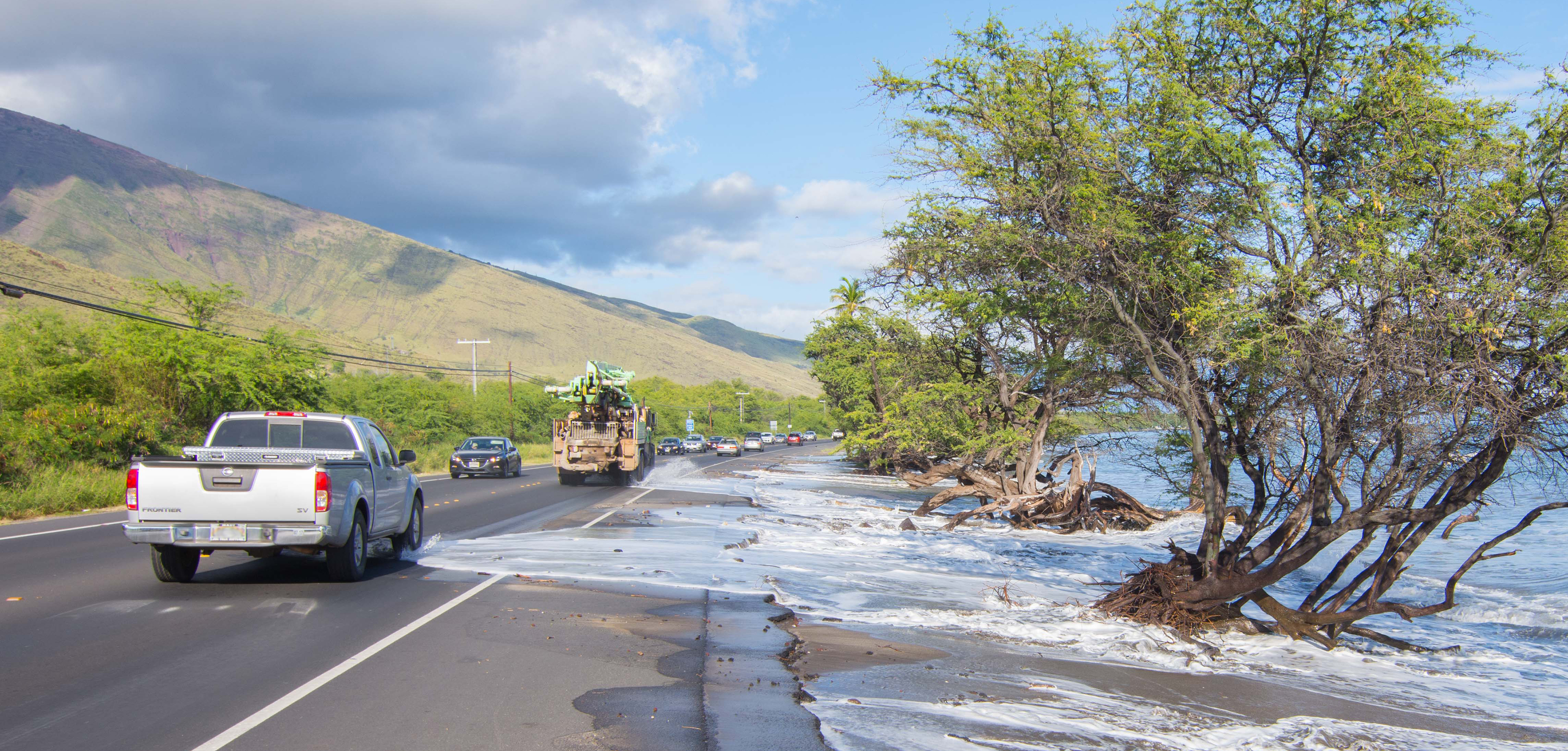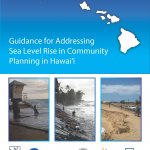
Building Resilience to Coastal Hazards and Climate Change in Hawai‘i
NOAA FY16 Coastal Resilience Grant and cooperative agreement with Hawaiʻi Sea Grant in partnership with the State of Hawaiʻi Department of Land and Natural Resources and Office of Planning
Project duration: May 2016 – April 2021
Questions?
Brad Romine: romine@hawaii.edu or call (808) 956-3013
About the Project
Hawaiʻi is highly vulnerable to coastal hazards including impacts related to climate change and sea-level rise. As sea level rise accelerates and climate and ocean conditions change, it is becoming increasingly important for island communities to develop policies and implement strategies that reduce vulnerability and increase resilience to natural hazards. Development, infrastructure, and populations in Hawaiʻi are generally concentrated on low-lying coastal plains making communities and local economies highly vulnerable to flooding, coastal erosion, sea level rise, and coastal disaster events including tropical cyclones and tsunamis. The overarching goal is to increase community resilience to coastal hazards and impacts from climate change and sea level rise in Hawaiʻi through three complementary projects building on the Hawai‘i Sea Level Rise Vulnerability and Adaptation Report completed by the State of Hawaiʻi in 2017 (available at climate.hawaii.gov/hi-adaptation/) and other recent projects and initiatives:
The Hawai‘i Sea Level Rise Viewer
This online Viewer incorporates the best available science on sea level rise predictions for Hawai‘i including exposure to passive flooding, annual high wave flooding, coastal erosion, and a combined sea level rise exposure area. The Viewer also includes vulnerability layers depicting potential economic loss of land and structures and flooded highways. With high-resolution interactive maps, the Viewer serves as a companion digital atlas for the Hawai‘i Sea Level Rise Vulnerability and Adaptation Report. This tool is accessible to planners, communities, and decision-makers across Hawai‘i allowing them to visualize and plan for the local impacts of coastal hazards and sea level rise. The Viewer was developed by the Pacific Islands Ocean Observing System (PacIOOS) under the direction of Hawaiʻi Sea Grant and the Hawaiʻi Department of Land and Natural Resources. The Viewer was completed in December 2017 along with the State Report and is available at hawaiisealevelriseviewer.org or climate.hawaii.gov/hi-adaptation/.
Guidance for Addressing Sea Level Rise In Community Planning in Hawai‘i
A guidance document, with recommended practices, examples, and resources, to assist county government in addressing sea level rise and coastal hazards as part of county planning and implementation framework. This Guidance is intended to assist county planners to build upon and improve existing efforts to address sea level rise. Developed through extensive input from the county planning departments and based on Hawaii’s existing planning context, this Guidance is organized under four key topics: vulnerability assessment, land use and development alternatives, plan and policy alignment, and adaptive management.
Guidance for Disaster Recovery Preparedness in Hawai‘i
Climate change is increasing Hawaii’s risk to both chronic and event-based hazards. This guidance document, with recommended practices and model resources, was developed with state and county government in Hawai‘i to assist them in establishing resilience-focused recovery practices before a disaster event, to enable communities to recover quickly while also protecting sensitive coastal environments. Guidance and model resources include three potential outputs of disaster recovery preparedness: disaster recovery ordinance, disaster recovery framework, and disaster reconstruction ordinance.




